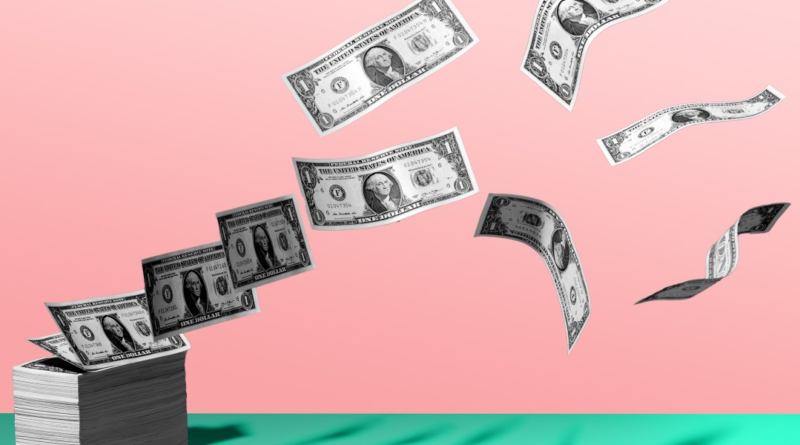The Fed left rates unchanged in July but may still make a cut before the end of the year. Here’s what it means for your money.
After the pandemic, inflation skyrocketed as prices on everything from rent to food increased. In response, the Federal Reserve started increasing interest rates to cool the pace of rising prices, hiking its benchmark rate 11 times between March 2022 and July 2023. Inflation remains higher than anticipated and currently sits right around 3%—well above the Fed’s 2% target, though lower than it was in May at 3.3%. The Fed expects to hold rates steady for now, though many are suspecting a potential cut at the next meeting in September. As said in the July 31 meeting, the FOMC “does not expect it will be appropriate to reduce the target range until it has gained greater confidence that inflation is moving sustainably toward 2%.”
Here’s how the federal rates have changed since 2022:
5 money moves you should make now that rates are high
The Fed’s rate influences the rates that banks set on consumer products, such as high-yield savings accounts, certificates of deposit (CDs), and credit cards.
“A higher federal funds rate means banks’ borrowing costs are greater,” says Dan Tolomay, chief investment officer of Trust Company of the South. “This gets passed on to consumers in the form of higher interest rates on things like auto loans and mortgages.”
If you’re wondering how you should navigate your finances since rates remain between 5.25% and 5.5%, a 21-year high, consider these four strategies:
1. Pay down your high-interest debt
High-interest debt, such as credit card debt, can prevent you from reaching your financial goals. With interest rates at a more than 21-year high, the cost of holding credit card debt has become increasingly expensive. In February, the average APR was 22.63% for all credit card accounts with assessed interest.
Make a plan to reduce or eliminate your debt. With the avalanche method, borrowers attack high-interest debt first to save money on interest. If, however, you prefer small wins to keep the momentum going until you’ve paid off all your debt, try the snowball method. The best strategy for you will depend on what you can stick to long term.
2. Put some money away in CDs
Certificates of deposit (CDs) utilize fixed APYs, meaning your rates won’t change once you get them set up. Some 5-year CDs have annual percentage yields (APYs) over 4%, and several 1-year CDs currently have APYs well above 5%.
It’s worth shopping around for a CD rate that takes advantage of the current high interest rates and potentially even setting up a CD ladder to make the best of the rates at hand.
3. Shop for a new savings account
Higher interest rates aren’t always bad news, especially for savers. The APY on your savings account will likely increase alongside the federal funds rate. If you’re shopping for a new account to park your savings in, a higher APY can help your balance grow even faster.
The most recent rates from the Federal Deposit Insurance Corporation (FDIC) put the national savings APY average at 0.46%, although banks set their own rates, and you can likely secure a much higher APY by shopping around and utilizing a high-yield savings account.
4. Avoid making any sudden investing moves
Any time rates change or the market anticipates these changes, you could see positive and negative stock market swings. Higher interest rates tend to negatively affect earnings and stock prices, and investors might be tempted to panic-sell as a result. Higher rates can cause higher borrowing costs for companies, which can impact company earnings and make investors less optimistic about a company’s profits.
If you’re investing for a goal that is still years down the line, you may want to ride out any short-term market bumpiness. Timing the market is a risky move, and panic-selling could work against you by incurring even greater losses once the stock market bounces back.
5. Work on boosting your credit score
Lenders rely heavily on your credit score and the information in your credit report to determine whether or not to give you financing for big purchases like a home or car. It’s important to scope out different rates and improve your credit score, as doing so could mean more favorable terms.
“If consumers are waiting for lower interest rates to refinance, when interest rates finally do start to come down the best way that they’re going to be able to take advantage of those is if they have good credit and good credit scores,” says Raneri.
Some of the key ways to improve your score include:
- Make timely payments. Pay your bills on time and in full.
- Keep your credit utilization ratio under 30%. Your credit utilization ratio is the ratio of credit you’re using to the total amount you’ve been extended.
- Limit the number of new credit applications. Too many new applications in a short amount of time can hurt your score.
- Review your credit report for errors. Inaccurate information can drag down your score significantly. Catching an error early on and disputing it with the credit bureaus immediately can ensure that it’s dealt with and removed from your report.
The takeaway
If the federal funds rate declines later this year, rates on everything from credit card APRs to mortgages will follow. While this is good news for those carrying credit card debt or planning to buy a home, it could mean bad news for savers stashing cash in bank accounts.
Regardless of what the Fed does, focus on what you can control when it comes to your finances—shop around for the best rates on savings accounts, improve your credit score, and stick with a long-term investment plan.




